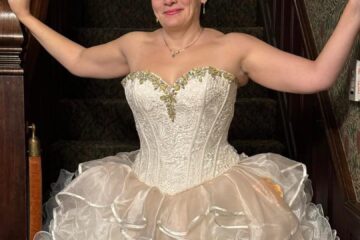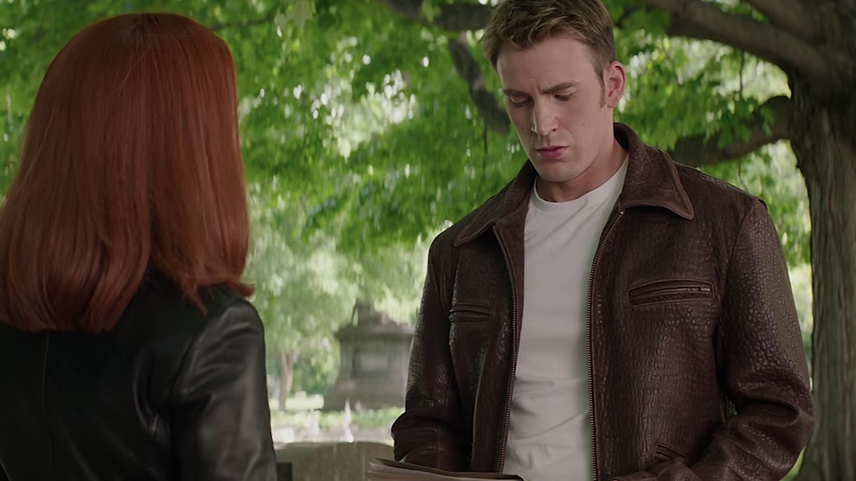I was too young to babysit, and had no allowance, so all the money I had came from the sidewalk or from returning glass bottles to the corner store. The week of Mother’s Day I shook out my tootsie-roll shaped bank and found I had $1.18.
The year before, I’d gotten Mom a little glass plaque from a garage sale which had cost twenty-five cents and had some aphorism about mothers and love on it and a rose. Mom had looked dispassionately at it and said, “Great, another thing to collect dust.” So I knew I had to stretch my money out and get something useful.
Now the next obstacle was, where could a 9-year-old go to shop? There were three stores on our block – a convenience store, a hardware store, and an antique shop. Of the three, the antique shop was definitely the most gift-likely. My twin sister and I would often stop into the antique shop on our way home from school just to admire things and soak in the hushed, potpourri-and-museum quality of the place.
Sadly, the antique shop didn’t have much that cost under $1.19. I quickly narrowed my options to an array of lace and embroidered hankies that lay fanned out on a dark oval tea-tray. They were $2.00 each, the cheapest thing in the store, and they were so lovely and feminine. They screamed “Mother’s Day.”
The shopkeeper noticed my longing, or perhaps figured it wasn’t natural for a little girl to stand staring at hankies for an hour, and asked me if I was all right. I held out my handful of change and stuttered and stumbled over asking if there was anything I could buy for my mother with this much.
She picked out the plainest of the hankies and handed it to me. I was so grateful! Gone was the shyness and stuttering and I gushed as she led me to the counter and counted out my pennies on the warn wooden surface. “It’s so pretty. Like Scarlett O’Hara could own it. I’m going to draw some hearts and flowers on paper to wrap it. Do you think she’ll like that?”
I was proud of my handkerchief, even though secretly I was disappointed it wasn’t one of the more heavily decorated ones. Beggars can’t be choosers, and Mom wouldn’t know there had been one worked all over with yellow roses. The shop keeper rang it up official, and I got to hear the register ding and receive a small receipt with blue ink that lied and said I’d paid the full two dollars. (Only as an adult do I realize the lady added from her own pocket since the shop likely ran on consignment).
The wrapping was a tour de force. I picked some tiny wild violets from the tree lawn and tucked them under a ribbon I had leftover from a balloon. I handed Mom my present, certain I had nailed it this year, much as I had completely nailed Father’s Day last year when I got Dad a key-chain shaped like the letter K, which he cooed and gushed over and immediately started using.
Mom took the package with trepidation, giving a high, nervous laugh. “You brought me weeds?” She picked the violets off like one might extract wilted lettuce from a salad.
“I drew the wrapping paper myself, so it’s home made,” I said, angling for praise.
She sighed, perhaps in disappointment at my behavior, perhaps at the unspoken, obvious fact that if I could have afforded actual wrapping paper, that would have been nicer. But she looked interested about the contents. She let the paper fall and laid the handkerchief on her lap. Now I saw it wasn’t as pretty as I remembered, really just plain linen with bands of slanted stitches. Her lip curled in disgust. “A snot rag?” She laughed, hard and without humor, and it got louder, meaner, as she held up the hanky and looked around at everyone. “Is that what you think of your own mother? I’m a snot rag!?” She threw it on the floor. “These horrible, spoiled brats! They call their mother a snot rag!”
And I knew it was obvious, that older people didn’t think hankies were “old-fashioned elegance” that I was a terrible daughter, again.
So this is the story of how I got my first handkerchief, and why I don’t really enjoy the concept of Mother’s Day.
It took me years to give up on pleasing mom with presents. Even as an adult. A gift basket was “trying to make her fat” a dozen roses was “dead plants and a waste of money” a live plant was “giving her work to do”. Eventually I sent her money, and I recommend this to all people who have a difficult relative to shop for: no one objects to receiving cash. Though she did hint that I could have sent more.
I no longer send her anything, which is perhaps unfair of me, but this holiday was never about expressing emotion; it was (for her) about receiving expected bounty.
Dad still carries the K keychain, though, and reacted with dismay when I tried to buy him a new one. “This one is still good!” He protectively cradled the vague square of worn leather that had once been a K. “My baby girl bought this for me!”


